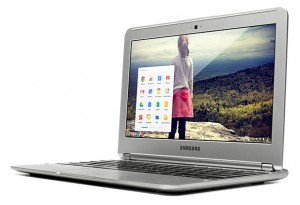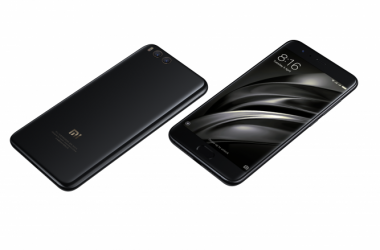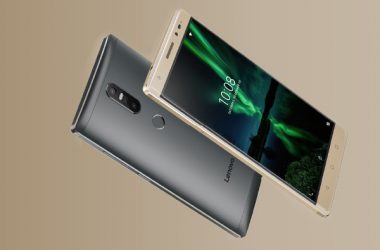 How much would you pay for a cloud-centric computer? With its new $249 Samsung Chromebook — a system based on the idea of doing almost everything online — Google is hoping it’s finally gotten the price right.
How much would you pay for a cloud-centric computer? With its new $249 Samsung Chromebook — a system based on the idea of doing almost everything online — Google is hoping it’s finally gotten the price right.
The new Samsung Chromebook runs Google’s Chrome OS operating system. Chrome OS is all about thecloud: Instead of using locally stored programs, it relies on Web-based apps like Gmail, Google Docs and Google Drive. You can do quite a bit offline — an important option that was missing in early versions of the software — but the Web is definitely the platform’s main focus.
Samsung Chromebook
Value seems to be the distinguishing feature of the new Samsung Chromebook, which is available for pre-order now and will ship next week from Amazon, Best Buy and Google’s own Play Store. At $249, the new Chromebook is a full $200 cheaper than the higher-end Samsung Chromebook 550 introduced earlier this year. It’s also a $100 cheaper than the first-generation Series 5 model that was released in mid-2011. (That device was removed from Google’s official Chromebook site today, leading me to believe that this new model will effectively replace it as the lower-end option.)
So what’s the new Samsung Chromebook actually like to use? I’ve spent some time getting to know the device. Here are my impressions.
Thin, light and sleek
Make no mistake about it: This is an attractive computer. It’s 0.8-in. thick and weighs 2.5 lb., making it quite practical to carry around. The Chromebook has a silver-colored plastic design with “Samsung” and a Google Chrome logo printed on its front; the general appearance is in line with the higher-end 550 Chromebook device, not the lower-end Series 5 model from last year.
The new Chromebook boasts an 11.6-in. 1366 x 768 display. That’s slightly smaller than the 12.1-in. 1280 x 800 displays on the previous Chromebook models, but at a glance, it’s hard to tell much of a difference. The screen certainly isn’t the most eye-catching, high-def display you’ve ever seen, but with its matte finish, it’s easy on the eyes and perfectly suited for things like Web browsing, email and document-oriented work.
While the device includes 16GB of local SSD storage, buyers also get 100GB of cloud-based Google Drive storage for two years — a subscription that would cost $120 if bought outright.
Feels great to use
The Chrome OS keyboard has been a standout feature of Chromebooks from the start, and this latest model is no exception. The new Samsung Chromebook utilises the same chiclet-style keyboard used in past devices; the keys are well spaced, responsive and a pleasure to type on. As far as I’m concerned, the Chromebook keyboard provides about the best laptop typing experience you can find today.
And like its predecessors, it’s been customised with numerous keys specific to the Chrome OS environment. In place of the function keys typically present on the top row of a Windows system, for example, the Chromebook has keys for such functions as navigating forward or backward in the browser, refreshing a page, toggling between windows and adjusting the device’s display brightness. In place of the caps-lock key, it has a search key that brings up a universal search box and list of available applications. (You can opt to remap the key to a more traditional caps-lock function if you want.)
The new Chromebook’s trackpad is no less impressive: It’s smooth and responsive, with accurate motion and support for a range of one- and two-fingered gestures. Swiping in any direction with two fingers, for instance, scrolls up, down, left or right on a page. Pressing anywhere on the trackpad with one finger left-clicks, and pressing with two performs a right-click command.
Surprisingly good performance — to a point
When I first saw the specs of the new Samsung Chromebook, I was a bit worried about how it would perform. It has only 2GB of RAM — the same as the first-gen Chromebook, which had a tendency to get bogged down and pokey when you had multiple tabs open or conducted any significant multitasking. (The more expensive 550 model has 4GB RAM and does not suffer from these issues.)
The new Chromebook has surprised me, though: Equipped with an ARM-based processor — the Samsung Exynos 5 Dual, which, incidentally, is fan-free and emits no audible noise when running — the system manages to keep up with light to moderate usage without suffering any slowdowns. It powers on in about 10 seconds; after you type in your Google account credentials, it takes just about five more seconds before you’re online, in a browser and ready to work. In my tests, I was able to open numerous tabs and windows — and navigate among them — without any noticeable problems.
There is a limit, though. Once I had about a dozen tabs opened, I started to see some slowdowns. Switching among tabs was slower and sometimes resulted in pages refreshing for no reason (presumably because the system was running low on RAM), and scrolling through pages became noticeably more labored and difficult. The effect grew more pronounced as more tabs were introduced and seemed particularly problematic when resource-intensive Web apps, such as TweetDeck or the Pixlr photo editor, were in use.
Based on my time with the new Chromebook so far, I’d say its performance easily surpasses that of the first-gen Series 5 Chromebook model. There’s really no comparison; this is a better device all around. The higher-end 550 Chromebook, however, is still top dog and would probably be the preferable choice for power users who tend to have a lot of tabs open or plan to perform heavy multitasking.
Speaking of power, the new Chromebook is listed for “over 6.5 hours” of battery life (information I received from Google earlier today indicated 6 hours, but that estimate has since been revised). That’s slightly more than the 6 hours listed for the higher-end 550 Chromebook model.
While I haven’t had a chance to thoroughly test the staying power of this new device, I can tell you that its battery stats indicate it’s pretty far above the 6.5-hour estimate so far. The 550 model, meanwhile, consistently outperforms its listed 6-hour spec.
All considered — and taking into account the low-power nature of the new Chromebook’s ARM-based chip — this system promises to be pretty impressive when it comes to stamina.
A good computer — but not for everyone
I’ve said it before and I’ll say it again: The Chrome OS has come a long way since its introduction two years ago. The platform now features a familiar-feeling desktop with movable windows and a customisable taskbar. There’s a status bar in the lower-right corner that shows you the current time and network connection status; clicking it allows you to access a host of system settings.
Users who spend most of their time in the cloud will find that Google’s Chrome OS offers several advantages over a traditional computing environment. You avoid annoying and time-consuming OS upgrades; Chrome OS updates frequently and seamlessly in the background, with new system updates coming in every week or so and delivering improved performance and fresh functionality to your device.
Beyond that, Chrome OS eliminates the hassles of manually updating applications over time; the platform’s Web-based apps all update seamlessly on their own, just like the OS. You don’t have to deal with messy drivers and software conflicts or worry about virus protection, either. And thanks to the nature of the software setup, Chromebooks don’t get gunked up and slowed down over time, as more traditional PCs frequently do.
At a Glance
HTC
Price: $249
Pros: Thin, sleek design; excellent keyboard; good battery life; simple to use
Cons: Subpar performance with high-intensity use; display is adequate but not great; limited to running only Web-centric apps
Chrome OS also benefits from Google’s universal syncing system: Within seconds of signing into any Chrome OS device, all of your Chrome bookmarks, settings, extensions and applications appear and are ready to use. And any other user can sign into the same system and access her data and settings, too — without disrupting or in any way affecting your stuff.
Chrome OS certainly isn’t for everyone, but for people who live Web-centric lives, it can be an excellent way to get the benefits of online computing without the annoyances that usually accompany them.
(For a much more in-depth look at the platform and its pros and cons, see my software-specific assessment: Chrome OS reviewed: The final verdict on Google’s cloud platform.)
The bottom line
Whether as a secondary system or a primary computer, the new Chromebook is outstanding for light Web browsing and Web-oriented work. It’s a slim, light, attractive device with good performance and promising battery life. Google seems to be marketing this machine as a secondary computer for the family, and in that regard, it’s a pretty enticing proposition.
But its limited resources put a firm ceiling on its usefulness. If you’re a power user who keeps numerous tabs and windows open or multitasks heavily throughout the day, you’d be better off investing in the higher-end Samsung Chromebook 550, which is more suited to handle that level of usage.
With this new Samsung Chromebook, though, Google has finally achieved a compelling and complete lineup of Chrome OS choices. At a starting price point of $249, it’s a fantastic value — especially when you consider the included two years of expanded Google Drive storage, worth $120 by itself. I suspect this new addition will help Google amass a far larger base of Chrome OS users than it’s ever seen before.





